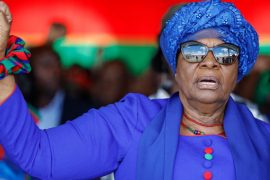The under-representation of women constitutes a serious democratic deficit, which undermines the legitimacy of the contemporary democratic ideal. Parity democracy and the promotion of women in decision-making positions are therefore important areas of action for EWL. Parity democracy implies the equal representation of women and men in decision-making positions. It goes a step further than quotas as it is based on the idea that women are not a minority: they represent more than half of humanity – a quantitative dimension – and one of its components – a qualitative dimension.
Research shows that women’s under representation in politics boils down to these 5 Cs:
- Confidence: women – for a variety of highly rational reasons – have more doubts putting themselves up for election
- Candidate selection: once women agree to run, it’s often difficult for them to get an electable spot on the election list.
- Culture: politics is a men’s world. Sexism is rampant and external threats – women – are often not welcome.
- Cash: when women run for election, their campaigns often receive less funding than their male counterparts)
- Childcare: across the EU, women spend double the amount of time on childcare compared to men
What can we do to support women in politics?
- Confidence: Invest in women. Set up ambitious training and mentoring programs.
- Candidate selection: Establish quota or zipping system in order to ensure gender balanced lists. Head-hunt women candidates.
- Culture: Establish a zero tolerance to sexism with clear channels for report sexual harassment.
- Cash: Provide earmarked funding for women candidates until equal representation is reached.
- Childcare: Change the “long hours” culture in politics. Provide childcare facilities.
We take a look at some of the facts and figures about women and their political participation
Women in parliaments
- Only 24 per cent of all national parliamentarians were women as of November 2018, a slow increase from 11.3 per cent in 1995
- As of January 2019, 11 women are serving as Head of State and 10 are serving as Head of Government.
- Rwanda has the highest number of women parliamentarians worldwide. Women there have won 61.3 per cent of seats in the lower house
- Globally, there are 29 States in which women account for less than 10 per cent of parliamentarians in single or lower houses, as of November 2018, including 4 chambers with no women at all.
Across regions
- Wide variations remain in the average percentages of women parliamentarians in each region. As of November 2018, these were (single, lower and upper houses combined): Nordic countries, 42.3 per cent; Americas, 30 per cent; Europe including Nordic countries, 27.7 per cent; Europe excluding Nordic countries, 26.6 per cent; sub-Saharan Africa, 23.6 per cent; Asia, 19.4 per cent; Arab States, 17.8 per cent; and the Pacific, 17 per cent.
Other domains of government
- As of January 2017, only 18.3 per cent of government ministers were women; the most commonly held portfolio by women ministers is environment, natural resources, and energy, followed by social sectors, such as social affairs, education and the family.
- The global proportion of women elected to local government is currently unknown, constituting a major knowledge gap.
- Women’s representation in local governments can make a difference. Research on panchayats (local councils) in India discovered that the number of drinking water projects in areas with women-led councils was 62 per cent higher than in those with men-led councils. In Norway, a direct causal relationship between the presence of women in municipal councils and childcare coverage was found.
Expanding participation
- As of November 2018, only 3 countries have 50 per cent or more women in parliament in single or lower houses: Rwanda with 61.3 per cent, Cuba with 53.2 per cent and Bolivia with 53.1 per cent; but a greater number of countries have reached 30 per cent or more. As of November 2018, 49 single or lower houses were composed of 30 per cent or more women, including 21 countries in Europe, 13 in Sub-Saharan Africa, 11 in Latin America and the Caribbean, 2 in the Pacific and 1 each in Asia and Arab States; more than half of these countries have applied some form of quotas – either legislative candidate quotas or reserved seats – opening space for women’s political participation in national parliaments. Gender balance in political participation and decision-making is the internationally agreed target set in the Beijing Declaration and Platform for Action.
- There is established and growing evidence that women’s leadership in political decision-making processes improves them. Women demonstrate political leadership by working across party lines through parliamentary women’s caucuses – even in the most politically combative environments – and by championing issues of gender equality, such as the elimination of gender-based violence, parental leave and childcare, pensions, gender-equality laws and electoral reform.
Culled from the ‘Women Lobby’ and UN.org.



